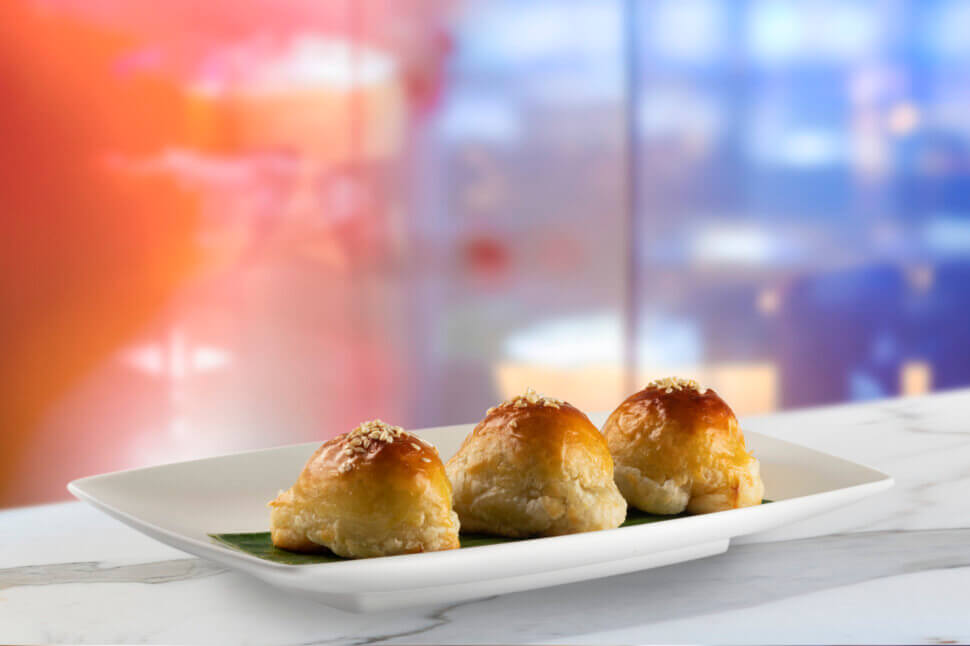Guide to Dim Sum
October 18, 2019
Dim Sum Culture has evolved over the years. Whereas once people would enjoy dim sum as breakfast at a roadside diner, nowadays the meal can be enjoyed in restaurants at any time of the day or night.
It is common in southern China and Hong Kong for dim sum to come served on trolleys stacked high with steamer baskets, and diners get given a card that gets stamped with every dish that they order. More recently, dim sum restaurants with table service have grown in popularity, replete with extensive menu cards listing a myriad of dishes. For the uninitiated, these menus can be intimidatingly large, with often little to no description under the Cantonese name.
Yauatcha’s dim sum menu is separated into different categories depending on the cooking method used. Read on for a description of all the dishes on the menu.
STEAMED
DUMPLINGS
Shui mai
Essentially an open-topped wheat flour dumpling, the traditional Cantonese shui mai is filled with pork or a mixture of diced pork and mushroom. Introduced in the Qing Dynasty, the fillings originally varied by season, stuffed with garlic chives in spring, mutton and pumpkin in summer, crabmeat in autumn, and mixed seafood in winter. Nowadays, shui mai dumplings are stuffed with a variety of fillings, including scallops and prawns, and they often come topped with silky orange fish roe.
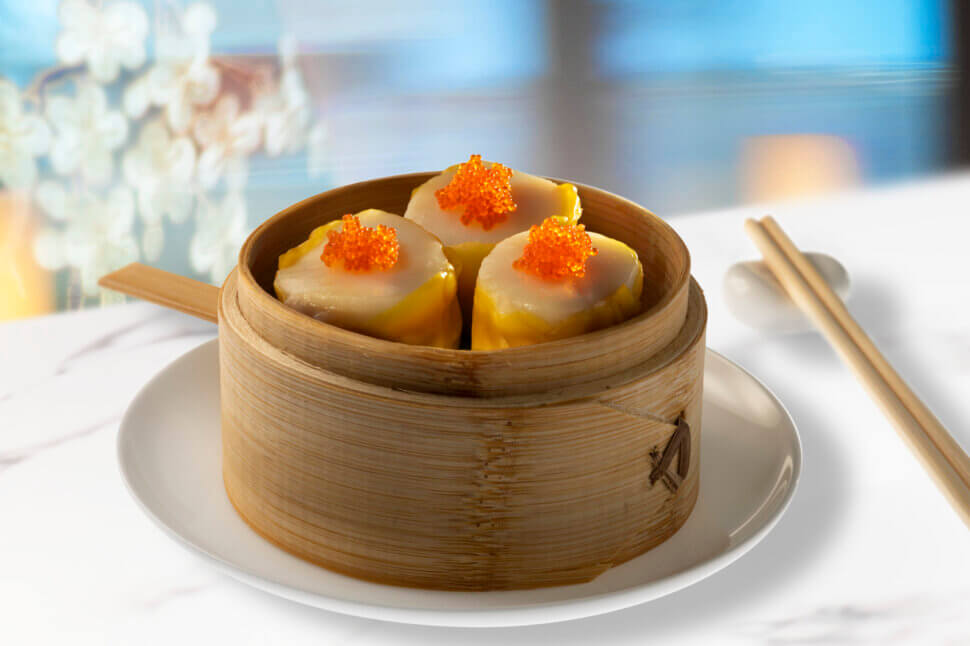
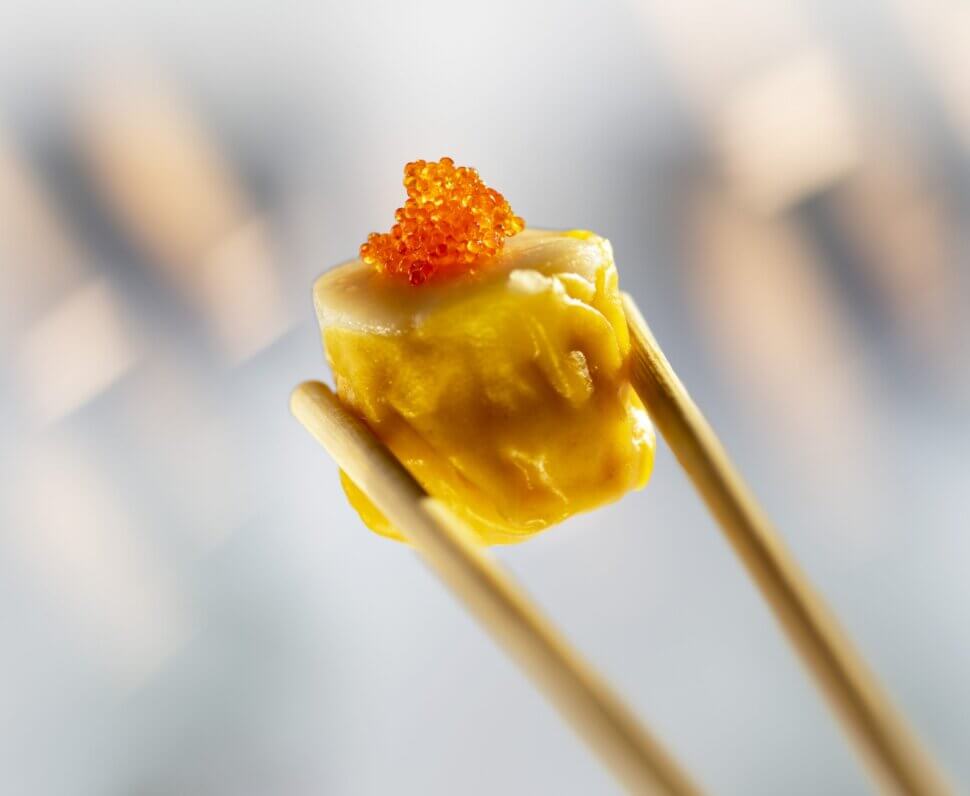
HAR GAU
There are few dishes more widely associated with dim sum than har gau, the steamed prawn dumpling. In actual fact, a chef’s proficiency is often measured by the standard of their har gau as it is such a tricky dish to make. The dough, made from a mixture of wheat starch and tapioca, should be translucent so that the filling is visible, and expertly pinched closed so that it doesn’t come apart when plucked by chopsticks from the dim sum basket.
SIEW LONG BUN
Also referred to as xiao long bao or soup dumplings, siew long buns are traditionally filled with seasoned pork meat and a gelatinous broth that melts to create a piping hot aromatic and meaty soup once steamed. It is best to eat these dumplings by first nibbling the pleated top then drinking the soup before enjoying the juicy meaty filling encased in the flour wrapper, although the Shanghainese often pop the entire dumpling into their mouths in one go.
WONTON
The wonton has some similarities to Italian ravioli: its filling is encased in a light pasta-like pastry and then boiled and served in a soup, although occasionally they are deep-fried. Wonton dishes vary from region to region, from the minced pork wontons served with red vinegar to the stuffed wontons served in numbing hot chilli oil sauce commonly served in Szechuan.
CHEUNG FUN
Cheung fun or rolled rice noodles are a popular dish in Hong Kong eateries and dim sum restaurants around the world. Fresh steamed rice noodles are stuffed with a variety of fillings, most commonly ground beef, mushrooms or prawns, and are served sitting in a pool of salty or sweet soy sauce.
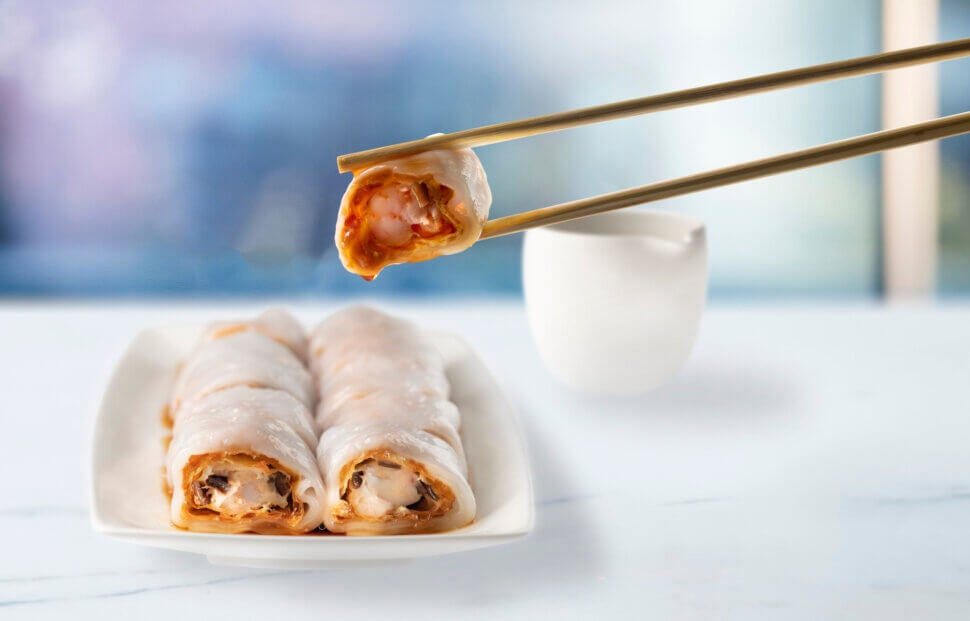
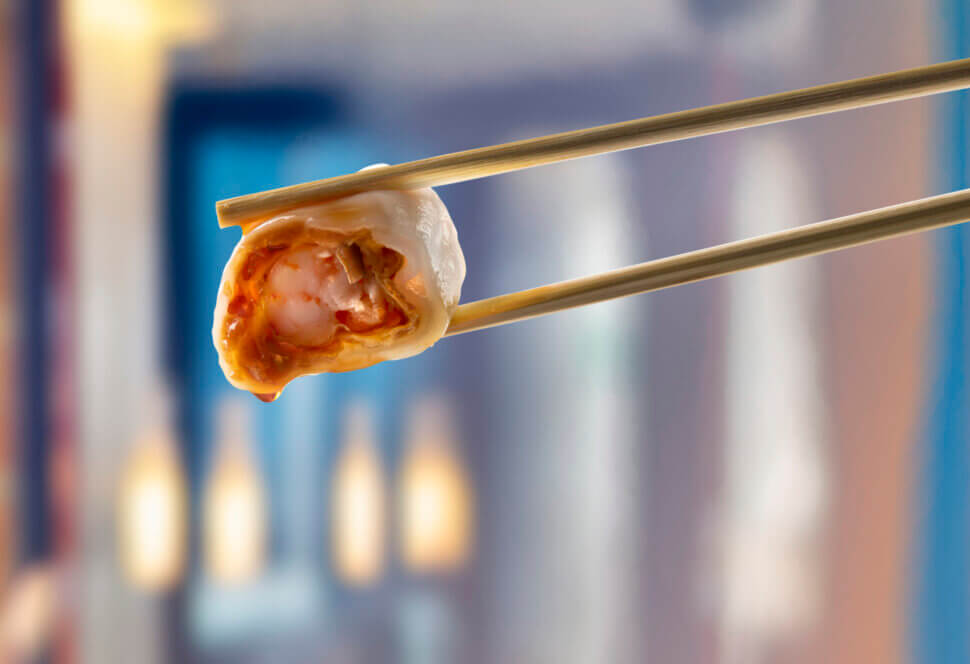
BUNS
Char sui bun
The classic steamed Char sui bun has a consistency similar to light and fluffy bread, and its appearance is more akin to Western white sandwich rolls. Char sui refers to the filling: the buns are stuffed with unctuous, sticky and salty barbecued pork.
BAKED, GRILLED, PAN FRIED
PUFFS
Known in China as ‘So’, baked pastry puffs are often stuffed with a meaty filling such as barbecue pork or, in Yauatcha, intensely sweet and sticky venison. The Chinese flaky pastry is similar to that used in French croissants and puff pastry, and the puffs are often sprinkled with sesame seeds and glazed.
